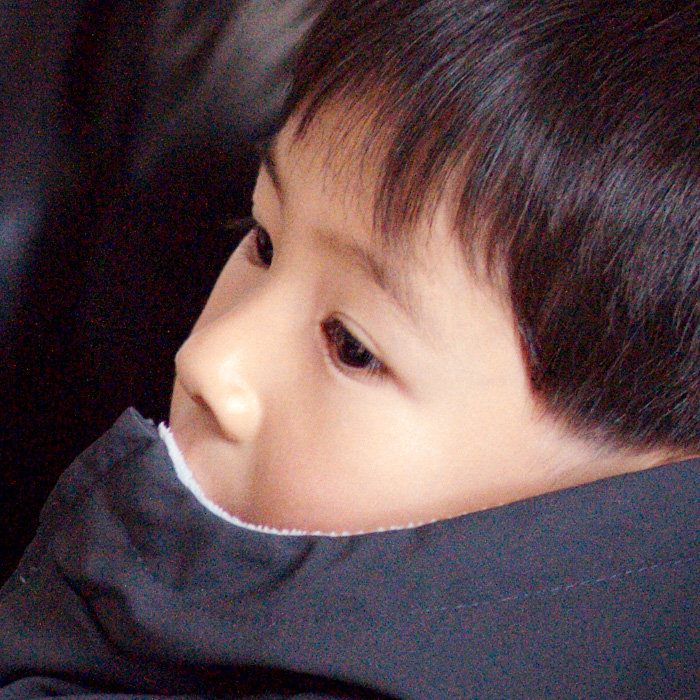Important note: An astute reader pointed out a significant mistake in the sample files used in this comparison. The S90 was shot at f/2.8, while the G1 and GH1 were at f/2. This means that the S90 sensor was given a stop less light, which invalidates the conclusions. I'll have a better, more controlled comparison up soon. Apologies for the error!
There has been quite a bit of hype about the Canon S90 high ISO noise performance. Some say it is right there with Micro Four Thirds in noise performance. Can it be true?
Reader's of this blog know that it is possible for any camera to have amazing noise performance. Simply pile on noise reduction, and noise will be very low. The real issue is how the detail and noise vary together at a particular shutter speed, f-stop, and ambient light level.
The S90 sensor is less than one fourth the size of a standard Four Thirds sensor as shown to scale below:
As such, we would expect a roughly two stop difference in high ISO detail versus noise between these two systems, similar to the two stop difference seen between Micro Four Thirds and 35mm full frame.
Before considering the Canon file, let's see how the Panasonic G1 and GH1 files differ. It is often said that the GH1 has significantly better noise performance than the G1. Some have put the difference at as much as a stop. Meanwhile, it is said that the GH1 suffers from shadow banding at high ISO, whereas the G1 and GF1 do not. I believe that most of the difference between the GH1 and G1 (and presumably GF1) comes down to the on-chip noise reduction.
There is no question that GH1 high ISO RAWs are "cooked", whereas G1 (and GF1 most likely) RAWs seem to be raw. As has been well documented on the DPReview forums, setting the GH1 film mode to -2 NR at ISO 1600 actually cooks more NR into the RAW file than does setting the film mode to +2 NR. I'm guessing that this on-chip NR makes the banding much more apparent, and that it actually is present but simply obscured by noise in the G1 and GF1 files.
In this example, I set the GH1 and Lumix 20 to ISO 1600, +2 NR (+2 is the least NR one can apply to GH1 high ISO RAW), 1/50s, f/2, and took a snap of my son Philip. The RAW file was processed in Iridient Software's Raw Developer, which adds no further NR or sharpening unless those settings are enabled. For the purposes of this comparison, those settings were disabled. Here's the resulting image (Click for larger version):
Now a snap with the same lens, same settings, same workflow, and G1 substituted for GH1 (bit of fooling with the white balance and black point in Raw Developer to get the picture looking more similar) (Click for larger version):
Here's a 100% crop from the GH1 shot:

Now the G1 crop:

If you look at the full-res version, you'll see banding in the GH1 file.
If you look carefully at the G1 full-res version, there's a bit of banding obscured by noise.
For comparison, I took the same snap with the Canon S90, also at ISO 1600, f/2 and 1/50s. I had to push the resulting RAW file in Digital Photo Professional (Canon's RAW processing app) to get it to the same apparent exposure as the Panasonic files. Like Iridient's Raw Developer, Canon's DPP seems to be an "honest" RAW converter in that it is possible to completely disable NR and sharpening. Here's the resulting resized image (Click for larger version):
The S90 crop:

The full-res S90 image is here.
Click here to download the RAW files used in this comparison.
Unlike the usual comparisons posted on this blog, these were done handheld without a tripod. I took enough snaps with each camera to know that handshake was not a significant factor in the selected representative images.





